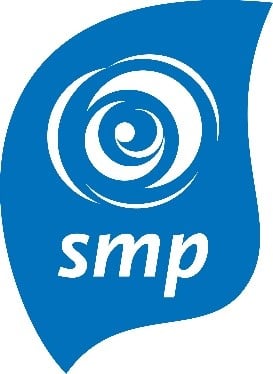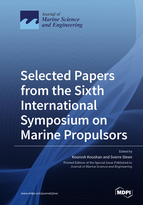Selected Papers from the Sixth International Symposium on Marine Propulsors
A special issue of Journal of Marine Science and Engineering (ISSN 2077-1312).
Deadline for manuscript submissions: closed (15 December 2019) | Viewed by 73058
Special Issue Editors
Interests: propulsors (propellers, thrusters, waterjets); cavitation; ventilation of propulsors; rotating marine renewable energy devices
Special Issues, Collections and Topics in MDPI journals
Interests: ship design; marine hydrodynamics; experimental hydrodynamics; cavitation
Special Issues, Collections and Topics in MDPI journals
Special Issue Information
Dear Colleagues,
Marine propulsors are key components of the many thousand ships operating in oceans, lakes, and rivers around the world. The performance of the propulsors is vital for the efficiency, environmental impact, safety, and comfort of ships. New types of propulsors, with electric drive, flexible blades, and multi-stage propellers, require new knowledge and improved tools. Innovative propulsor types using renewable energy from waves or winds are also becoming commercialised. Marine renewable rotating devices are used to gain energy from the water current. The improvement of computational fluid dynamics presents new opportunities for advanced design and performance prediction, and new instrumentation and data collection techniques enable more advanced experimental techniques. This Special Issue of the Journal of Marine Science and Engineering is devoted to bringing the latest developments in research and technical developments regarding marine propulsors and marine renewable rotating devices to the benefit of both academics and industry. This issue includes extended selected papers from the 6th International Symposium on Marine Propulsors, as well as other contributions.
To know more, visit the symposium website www.marinepropulsors.com
Prof. Dr. Kourosh Koushan
Prof. Dr. Sverre Steen
Guest Editors 
Manuscript Submission Information
Manuscripts should be submitted online at www.mdpi.com by registering and logging in to this website. Once you are registered, click here to go to the submission form. Manuscripts can be submitted until the deadline. All submissions that pass pre-check are peer-reviewed. Accepted papers will be published continuously in the journal (as soon as accepted) and will be listed together on the special issue website. Research articles, review articles as well as short communications are invited. For planned papers, a title and short abstract (about 100 words) can be sent to the Editorial Office for announcement on this website.
Submitted manuscripts should not have been published previously, nor be under consideration for publication elsewhere (except conference proceedings papers). All manuscripts are thoroughly refereed through a single-blind peer-review process. A guide for authors and other relevant information for submission of manuscripts is available on the Instructions for Authors page. Journal of Marine Science and Engineering is an international peer-reviewed open access monthly journal published by MDPI.
Please visit the Instructions for Authors page before submitting a manuscript. The Article Processing Charge (APC) for publication in this open access journal is 2600 CHF (Swiss Francs). Submitted papers should be well formatted and use good English. Authors may use MDPI's English editing service prior to publication or during author revisions.
Keywords
- Propellers
- Waterjets
- Unconventional propulsors (azimuthing, SPP, rim drive, etc.)
- Renewable energy-based propulsors
- Energy-saving devices
- Cavitation, noise, and vibration
- Propulsor dynamics
- Propulsion in seaways
- Propulsion in off-design conditions
- Renewable energy-rotating devices







